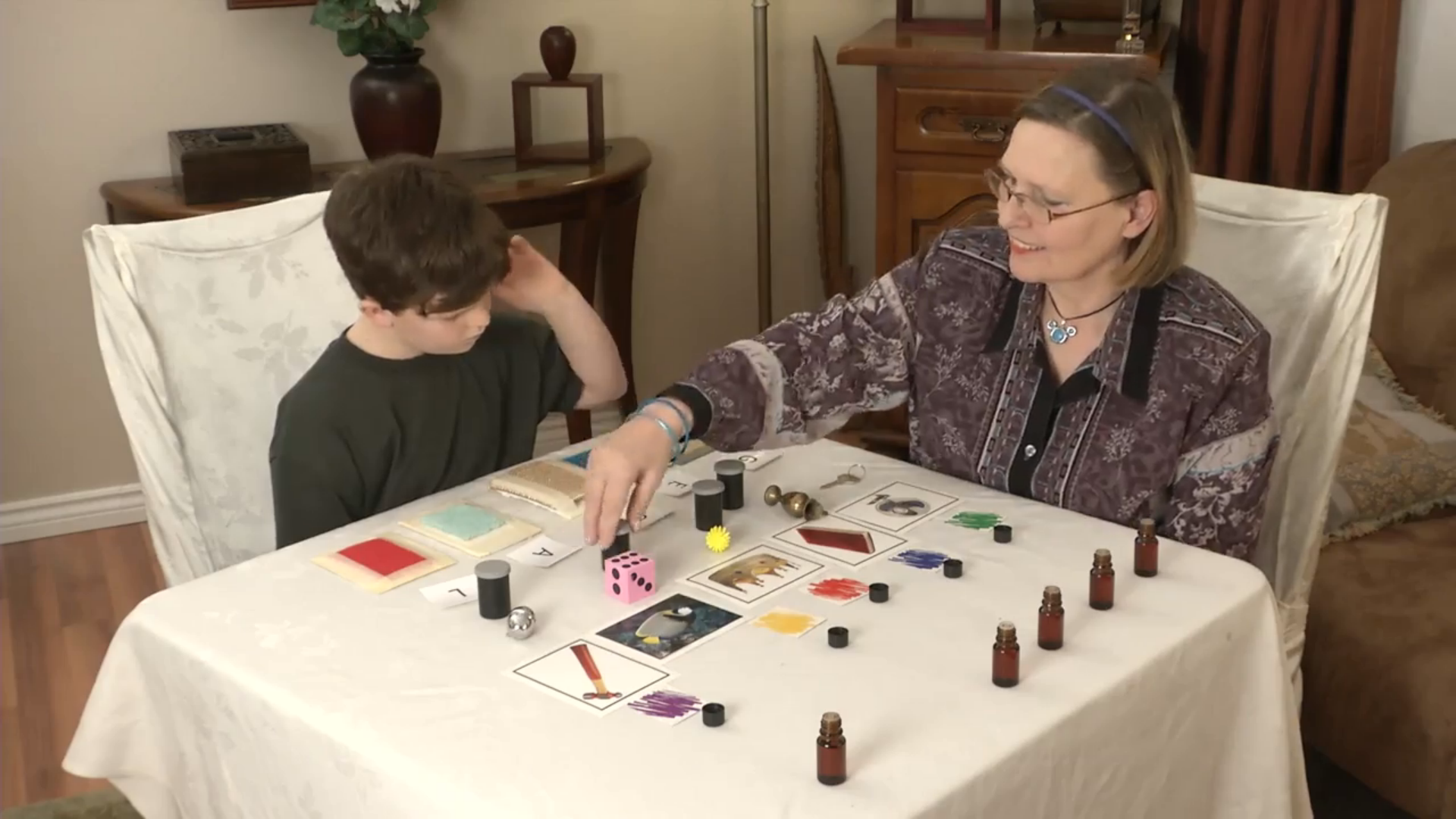This study and the several articles added in additional reading demonstrate that the brain has a specific location for the memory of each and every sensory information.
Studies also showed that without memorization of the sensory information, there is no learning possible and recognition of one’s environment is almost impossible as it can’t be related to past experience.
There is no natural link between the sensory translation modalities and only experience and repetition can create those links which will increase the learning and memorization capacities.
The purpose of this exercise/game is to put to work the various new connections built in the previous worksheets. Memory is a storage of information and experiences which is organized and functional depending on many factors. One of the keys of long or short term memory is Dopamine, and the precursor of Dopamine is serotonin. We have focused on the increased production of serotonin which allows a good translation and storage in an organized manner of all sensory information. We have exercised several times a day the auditory system while listening to music. We have exercised the visual system, with eye tracking, visual processing with art, and visual-tactile association. This exercise is using the four senses in a protocol that can’t be explained, that is arbitrary, consequently only intense focus will allow the memorization of the sequences.
Again, we use very natural inputs, auditory, smell, touch, vision, but the way we associate them to request a performance is very unusual, more than unusual, it is never happening in real life. This is where neurogenesis, growth of new cells will be promoted.
Trying to remember a sound, with a smell is in itself a very demanding task. There is no pre existing connection or logic to fit this information into memory. This means that the brain has to create this set of information as being one that can be stored. Suddenly, there is an information called “sound of rice and smell of lavender” as a unique information. We, of course, do not stop at this task that could almost be simple: we expand the information to two other cortical centers, vision and tactile, with no logic link : we are not looking at the picture of a box or rice or touching grains of rice in a bowl! of course, we look at a tree, or a spoon picture and feel corrugated cardboard or tin foil.
You can almost visualize the brain activity here: first the auditory system, imagine two circles on the sides of the brain, then a red line goes from those areas on both side to the olfactory bulb, deeply lodged under the brain, right behind the nose, to capture the smell, then activate the amygdala, frontal cortex, mental image and speech, as, for a smell to be recognized, it has to be associated to its physical representation (a lemon) and its name (lemon)
The rehearsing of the input each day will gradually strengthen these new connections and allow retrieval of the groups of inputs, one by one. As the child is focusing on each sensory input, release and increased production of serotonin and Dopamine make the task easier and easier, and the memorization strong and reliable.
Those new connections will eventually be used to process any complex sensory environment which will come to the child, and of course make learning of any new information much easier and organic.
Additional reading:
- Neurosci Biobehav Rev. 2003 Sep;27(4):307-28. Olfactory perceptual learning: the critical role of memory in odor discrimination. Wilson DA, Stevenson RJ.
- Cortex. 1995 Mar;31(1):25-40. Odor recognition memory is better under bilateral than unilateral test conditions. Bromley SM, Doty RL.
- Experimental Brain Research. 2001;137(1):71–82.Long-term cholinergic enhancement of evoked potentials in rat hindlimb somatosensory cortex displays characteristics of long-term potentiation. Verdier D, Dykes RW.
- J Exp Child Psychol. 1998 Mar;68(3):216-35. Childhood anxiety and memory functioning: a comparison of systemic and processing accounts. Daleiden EL.
- Clin Psychol Rev. 2006 Nov;26(7):876-94. Epub 2006 Mar 9. The development of information processing biases in childhood anxiety: a review and exploration of its origins in parenting. Hadwin JA, Garner M, Perez-Olivas G.
- Clin Psychol Rev. 2009 Aug;29(6):459-70. Epub 2009 Jun 7. Cognitive vulnerability to anxiety: A review and an integrative model. Ouimet AJ, Gawronski B, Dozois DJ.
- J Anxiety Disord 2010 Apr; 24(3):318-25. Metacognition, memory disorganization and rumination in posttraumatic stress symptoms. Bennett H, Wells A.
- Clin Psychol Rev. 2006 Nov;26(7):876-94. Epub 2006 Mar 9. The development of information processing biases in childhood anxiety: a review and exploration of its origins in parenting. Hadwin JA, Garner M, Perez-Olivas G.
- Clin Psychol Rev. 2009 Aug;29(6):459-70. Epub 2009 Jun 7. Cognitive vulnerability to anxiety: A review and an integrative model. Ouimet AJ, Gawronski B, Dozois DJ.
- Neural Comput. 2006 Jan;18(1):10-25. Sensory memory for odors is encoded in spontaneous correlated activity between olfactory glomeruli. Galán RF, Weidert M, Menzel R, Herz AV, Galizia CG.
- Behavioral Neuroscience. 1998;112(3):467–47. Induction of long-term receptive field plasticity in the auditory cortex of the waking guinea pig by stimulation of the nucleus basalis. Bjordahl TS, Dimyan MA, Weinberger NM.
- Experimental Brain Research. 2003;153(4):554–572.The thalamo-cortical auditory receptive fields: Regulation by the states of vigilance, learning and the neuromodulatory systems. Edeline JM.
- Cognitive vulnerability to anxiety: A review and an integrative model. Ouimet AJ, Gawronski B, Dozois DJ.
- Semin Cell Dev Biol. 2006 Aug;17(4):462-70. Epub 2006 May 5. Cortical contributions to olfaction: plasticity and perception. Wilson DA, Kadohisa M, Fletcher ML.

